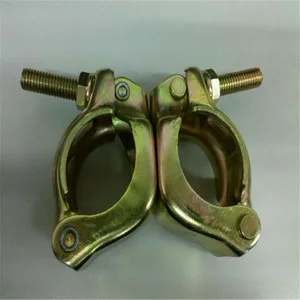When it comes to construction projects, safety and efficiency are paramount. One often overlooked but crucial component in scaffolding setups is the scaffolding clip. Choosing the right scaffolding clips can significantly impact the stability of the structure and the safety of the workers. This article explores what every contractor should know about selecting the perfect scaffolding clips for their projects.
Understanding the Importance of Scaffolding Clips
Scaffolding clips serve as the connectors that hold various scaffolding components together. Without reliable clips, the entire scaffold structure can become unstable, risking collapse and accidents. Therefore, understanding the types and quality of scaffolding clips is essential for contractors who want to ensure safety and durability on site.
Types of Scaffolding Clips
There are several types of scaffolding clips, each designed for specific purposes:
- Right Angle Clips: Used to connect horizontal and vertical tubes at a 90-degree angle.
- Swivel Clips: Allow tubes to be connected at any angle, providing flexibility for complex scaffolding designs.
- Putlog Clips: Designed to fix putlogs or ledger tubes to the standards.
- Sleeve Clips: Used to join two tubes in a straight line.
Knowing the differences between these types will help contractors in choosing the right scaffolding clips for their specific needs.
Factors to Consider When Choosing Scaffolding Clips
Material Quality and Strength
Scaffolding clips are typically made from steel, but the grade and coating can vary. Contractors should look for clips that are galvanized or otherwise treated to resist corrosion, ensuring long-lasting performance.
Compatibility
It’s crucial that scaffolding clips are compatible with the tubes and fittings used in the project. Using mismatched clips can lead to weak connections and potential failures.
Load Capacity
Every scaffolding clip has a load rating. Contractors must verify that the clips can handle the expected load, including workers, tools, and materials.
Compliance with Safety Standards
Choosing scaffolding clips that meet industry safety standards, such as those set by OSHA or local regulatory bodies, ensures compliance and reduces liability.
Best Practices for Using Scaffolding Clips
- Inspection Before Use: Always inspect scaffolding clips for signs of wear, rust, or damage before installation.
- Proper Installation: Ensure clips are tightened correctly but not over-tightened to avoid damaging the tubes.
- Regular Maintenance: Routine checks during the project will help identify any issues early on.
Conclusion
Choosing the right scaffolding clips is a vital part of constructing safe and stable scaffolding structures. Every contractor should be knowledgeable about the types, materials, and standards associated with these clips. By prioritizing quality and compatibility, contractors can protect their teams and ensure project success. Remember, when it comes to scaffolding safety, choosing the right scaffolding clips is not just a task — it’s a responsibility.

